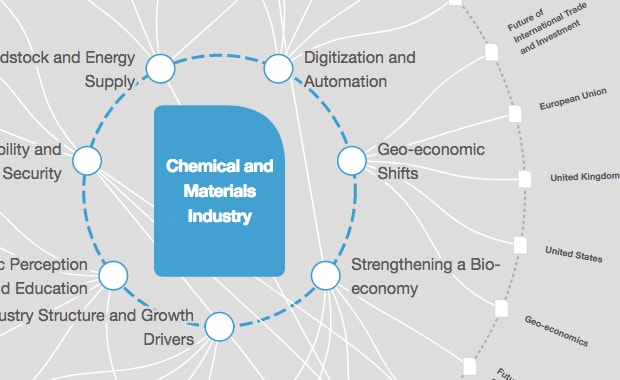How symbiosis can help industrial clusters reach net-zero

This ethanol plant uses waste steam from a nearby incinerator Image: Mr3641 / Public Domain
- Industrial symbiosis keeps valuable resources in use for as long as possible by identifying cross-sectoral business opportunities for utilising them.
- It can play a big role in helping industrial clusters achieve net-zero, particularly by addressing scope 3 emissions.
- It also generates significant micro- and macroeconomic benefits and can be a catalyst for innovation.
Industrial symbiosis (IS) is a very efficient means to mitigate climate change and improve competitiveness. IS can be defined as “the use by one company or sector of underutilised resources broadly defined (including waste, by-products, residues, energy, water, logistics, capacity, expertise, equipment and materials) from another, with the result of keeping resources in productive use for longer”.
Industrial symbiosis was incorporated into EU law in 2018, and member states are now required to promote replicable practices of IS. It is also a key component of the EU's Circular Economy Action Plan.
The University of Oxford’s Centre for Research into Energy Demand Solutions identifies resource efficiency as the single biggest opportunity to mitigate climate change. A recent report by Accenture in collaboration with World Economic Forum – Industrial Clusters: Working Together To Achieve Net Zero – is a welcome addition to the discussion, particularly the content on systemic efficiency and circularity as this is the area where IS has most to contribute.
This report is also very timely; the share of global emissions caused by material production rose from 15% in 1995 to 23% in 2015. We are currently lobbying for IS to have its rightful place at COP26 in order to showcase how it can contribute to climate change mitigation.
In delivering industrial symbiosis, the identification of clusters is a challenge as often clusters are defined either as single-sector groupings or geographically co-located groupings (such as an industrial park or zone), neither of which is optimal for IS. Industrial symbiosis thrives on unconstrained geographic boundaries and cross-sector diversity; our data shows that for most sectors, 80% of IS transactions take place outside one’s own sector, with the only exception being construction which is still over 50%.
Even in a sector cluster situation, IS has a lot to offer should the members come together to implement an outward-facing IS strategy (including and diversifying the existing value chain to additional sectors). A cluster approach may still be limiting where a geography is defined by a hard boundary. At its best, applying eco-industrial park (EIP) principles supports and develops the local economy by identifying opportunities for the existing businesses to be more resource and energy-efficient. Often the solutions to resource issues (the right company, technologies, quantities and innovation, for example) are simply not available within close geographic proximity. With the obvious exception of waste heat, most resources will travel tens or hundreds of miles for a synergy; the economics of the resource (precious metal content in a waste flow, for example) will determine the viability of that solution.
In recent years, several countries have moved away from the focus on EIPs to a more regional IS approach; one that recognises the limiting effect of imposing strict boundaries on innovation and business opportunity – the Republic of Korea is a notable example. Place-based solutions for industrial parks and economic development zones are grounded in resource-efficiency opportunities, including identifying appropriate inward investment, but ones set within the wider context of the region or country.
The greatest contribution industrial symbiosis can make towards helping clusters achieve net zero is perhaps the inclusive, cross-sector engagement strategy at its core that not only delivers short, medium and long-term benefits but also creates the conditions for further innovation. In addition, by engaging industry in a holistic manner it provides an opportunity to introduce other reenforcing circular economy solutions whilst delivering an immediate contribution to net-zero ambitions.
However a cluster is defined, it can be a catalyst/focal point for industrial symbiosis activity which delivers economic and environmental benefits for a whole region.
Don't miss any update on this topic
Create a free account and access your personalized content collection with our latest publications and analyses.
License and Republishing
World Economic Forum articles may be republished in accordance with the Creative Commons Attribution-NonCommercial-NoDerivatives 4.0 International Public License, and in accordance with our Terms of Use.
The views expressed in this article are those of the author alone and not the World Economic Forum.
Stay up to date:
How to Save the Planet
Related topics:
Forum Stories newsletter
Bringing you weekly curated insights and analysis on the global issues that matter.








